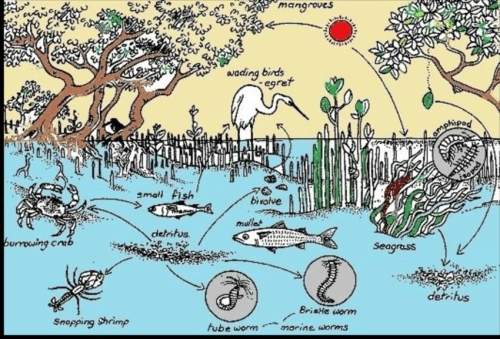• Botanical name: Zebrina pendula cv.

Biology, 22.05.2021 05:00 trevorhenyan51
.
What is the common name for the greenery described?
• Botanical name: Zebrina pendula cv.
• Origin: South America
• Color: green leaves with white, pink or purple flowers
O Wandering Jew
O English Ivy
O Leatherleaf Fern
O Astilbe

Answers: 3


Other questions on the subject: Biology

Biology, 22.06.2019 21:40, ljoslin21
This problem has been solved! see the answerbuilding a sea wall to prevent ocean water from encroaching on a city is an example of climate change [ select ] ["sequestration", "mitigation", "vulnerability", "adaptation"] .creating a carbon tax to provide incentives to reduce co2 emissions is an example of climate change [ select ] ["sequestration", "mitigation", "vulnerability", "adaptation"] .planting more forests is an example of enhancing carbon [ select ] ["sequestration", "mitigation", "vulnerability", "adaptation"] .the tendency to be adversely affected or lack of ability to adapt defines climate change [ select ] ["sequestration", "mitigation", "vulnerability", "adaptation"] .sequestration, adaption, mitigation, vulnerability
Answers: 2

Biology, 22.06.2019 23:10, Yeetadab1974
Which case is an atom least likely to bond with other atoms
Answers: 2

Biology, 23.06.2019 02:40, tiffanybrandy23
Ascientist conducted an investigation about the effects of diet on disease resistance in rats and made surprising observations. the mice with a genetic ear mutation seemed to show similar patterns of resistance compared to mice with normal ears. based on this information, what will most likely occur? a. she will perform a second investigation on the role of certain genes in disease resistance. b. she will revise her hypothesis to pertain to mutations rather than diet, and update her data accordingly. c. she will use this information to determine that her original question was nonscientific, so she will revise it. d. she will determine that her hypothesis was invalid because resistance must be genetic.
Answers: 3

Biology, 23.06.2019 03:00, marieknight689
4) this is any functional structure within the confines of a cell; literally a. "small organ; " it usually has a membrane-based structure 5) this is a tiny fluid-filled cavity in the cytoplasm. it can be used for storage of biochemicals. 6) this is a two-part process that ends in the assembly of proteins at the ribosomes within cells. the first part, transcription, begins in the nucleus, when the dna code is transferred to mrna. the second part, translation, takes place at the ribosomes, where both mrna and trna work to assemble proteins. 7) these are singular, relatively long, whip-like organelles that many unicellular organisms use for motion. 9) this holds an organisms hereditary information. 10) energy stored in chemical bonds of molecules. - down 1) this kind of cell from a multicellular organism does not have a large central vacuole. 2) this organelle serves to process and package lipids and proteins in the cell. 3) this kind of cell has a large central vacuole and a cell wall. 8) chloroplast thylakoids are frequently stacked to form these disks. submit
Answers: 1
You know the right answer?
.
What is the common name for the greenery described?
• Botanical name: Zebrina pendula cv.
• Botanical name: Zebrina pendula cv.
Questions in other subjects:


Mathematics, 03.12.2020 21:20


Health, 03.12.2020 21:20


Mathematics, 03.12.2020 21:20

Social Studies, 03.12.2020 21:20


English, 03.12.2020 21:20

Physics, 03.12.2020 21:20




